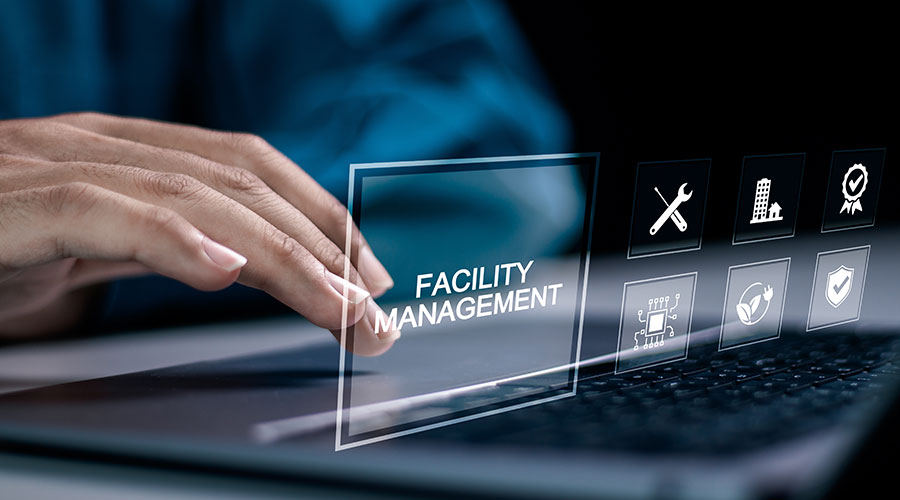What New Facility Managers and Technicians Need to Know
Facility Champion Doug Pearson shares how younger facility managers and technicians can set themselves up for success in a new job.
By Annie Celentani, Contributing Writer
Landing a job as a facility manager or a technician at an institutional or commercial facility is a major career milestone for younger professionals. Despite the excitement of advancing their careers, however, new technicians and facility managers may find themselves uncertain about how to get started.
Doug Pearson is a FaciltiesNet Facility Champion Award recipient and AVP of facilities, operations and planning at Kent State University. His nearly 40-year career spans K-12, healthcare, federal government, and higher education settings. He has extensive experience in training new hires and setting them up for success.
Pearson has published a book, “Facilities Management: What Really Matters: A Guide To The Human Aspect of Successful Facilities Management” that provides insight to managers and technicians on how to adjust. The book teaches eight critical components of facilities management including basic human needs, emotional intelligence, change management, conflict management, motivation, recognition, the power of positive attitude, and customer service.
When first starting, getting a solid grasp on responsibilities should be one of two initial priorities. This will help new hires establish clarity around their roles in the operations and prepare to meet team members.
“Review the detailed inventory and any condition audits,” Pearson says. “If these don’t exist, walking the facilities is a good place to start to prepare your inventory.”
Next, when staff is involved, new hires should “meet with them as a group for introductions and ask what their biggest challenge is,” says Pearson, who oversees more than 400 employees covering 2,500 acres and 8 million square feet across 10 campus locations. Showing respect by meeting with staff in-person and genuinely seeking their input will pay off in the long run.
Once new managers know their responsibilities and meet with staff, new hires can start learning the administrative processes like time reporting, purchasing, and work orders, Pearson notes. He suggests finding out how many services are contracted and asking for copies of the service contracts to review. By taking the time to become acquainted with workflow, resources and services, managers can gain a more comprehensive understanding of where time and money are going.
What about making changes and starting projects?
“You want to spend the first six months listening to the existing employees, so you have a good understanding of where the opportunities for improvement are,” Pearson says. “Review the records, as-builts, work order and purchasing history. This will give you a good idea of what has been going on.” When it’s time to set goals after patient observation and detailed research, Pearson stresses that goals should be “thoughtful and thorough.”
For new technicians and managers who want to feel organized and confident, Pearson recommends knowing the emergency response plan. “If there isn’t one,” he adds, “develop a list of contacts to deal with emergencies. An emergency could happen at any time, and you want to be prepared to respond.” Pearson emphasizes that effective emergency preparedness involves knowing your responsibilities and staff.
Another key to feeling organized and confident is being able to easily reference project details, budgets, and deadlines. “Keep records of all your assignments,” Pearson says. Having information on assignments readily available will equip managers to talk to anyone under pressure or on short notice.
As with any leadership role, resistance and unforeseen circumstances are bound to arise. When challenges in facility management present themselves, Pearson advises, “Listen more than you talk. Respect the opinions of the existing employees. When it comes time to issue work directives or make requests, be firm and to the point. Clearly explain what you want done and an expectation for completion time.”
Whether facing financial constraints, staffing shortages or obstacles with implementing sustainability efforts, focusing on providing outstanding customer service can help keep the bigger picture in view.
Ultimately, becoming a technician or manager that people want to work with by being personable and accessible is paramount. Forming relationships as you go, rather than only calling on people when you need something, makes all the difference. If new hires are unsure about who to be in contact with, Pearson recommends getting to know internal purchasing agents and human resources staff, as well as meeting the fire marshal, the building inspector and “any other authority having jurisdiction.”
Learning active listening skills and understanding the impact of emotional intelligence are also two tips that Pearson suggests new employees embrace to help their transitions go more smoothly.
Annie Celentani is a freelance writer based in Wauwatosa, Wisconsin.
Related Topics:












